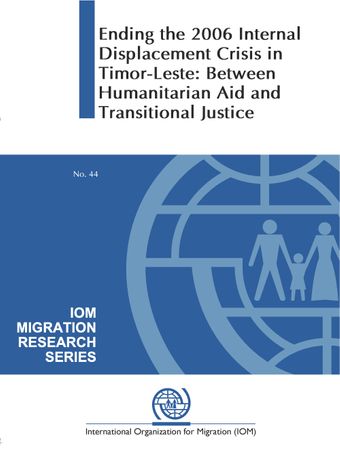Conclusion

- Author: Peter Van der Auweraert
- Main Title: Ending the 2006 Internal Displacement Crisis in Timor-Leste , pp 43-45
- Publication Date: December 2012
- DOI: https://doi.org/10.18356/bcec8c8e-en
- Language: English
The NRS was a remarkably efficient and effective way of ending a displacement crisis in, what so far at least appears to be, a durable manner. It allowed a humanitarian problem that had increasingly started to look like intractable and long-term – that is, the existence of camps all over the capital city of Dili – to disappear completely in a matter of months, rather than years or decades as many had predicted. The resolution of the IDP crisis also allowed the government and the country itself to start focusing on economic development and the much needed improvement of the daily lives of the Timorese population. While the government’s deliberate political choice to avoid the reparations terminology altogether cannot be ignored in terms of qualifying the NRS as a reparations programme, it remains the case that the Strategy was arguably “something in addition to” an instance of successful humanitarian or post-crisis policymaking. Clear acknowledgement on the part of the government of the failure of the state to protect IDPs; official recognition of IDPs as victims of human rights violations and hence their right to receive a remedy; and the explicit connection between the cash grants provided by the Timorese state and the losses suffered by the IDPs arguably place the NRS somewhere in between reparations and the adoption of durable solutions for internally displaced populations.
© United Nations
ISBN (PDF):
9789210559188
Book DOI:
https://doi.org/10.18356/2891f2fb-en
Related Subject(s):
Migration
Sustainable Development Goals:
Countries:
Timor-Leste
-
From This Site
/content/books/9789210559188c009dcterms_title,dcterms_subject,pub_keyword-contentType:Journal -contentType:Contributor -contentType:Concept -contentType:Institution105
/content/books/9789210559188c009
dcterms_title,dcterms_subject,pub_keyword
-contentType:Journal -contentType:Contributor -contentType:Concept -contentType:Institution
10
5

